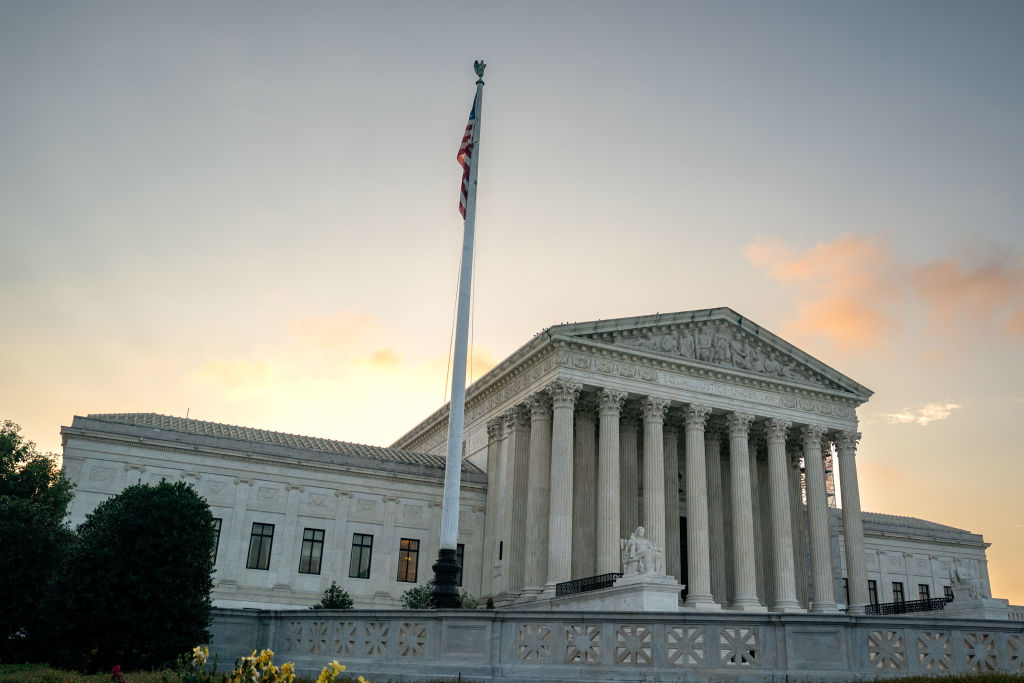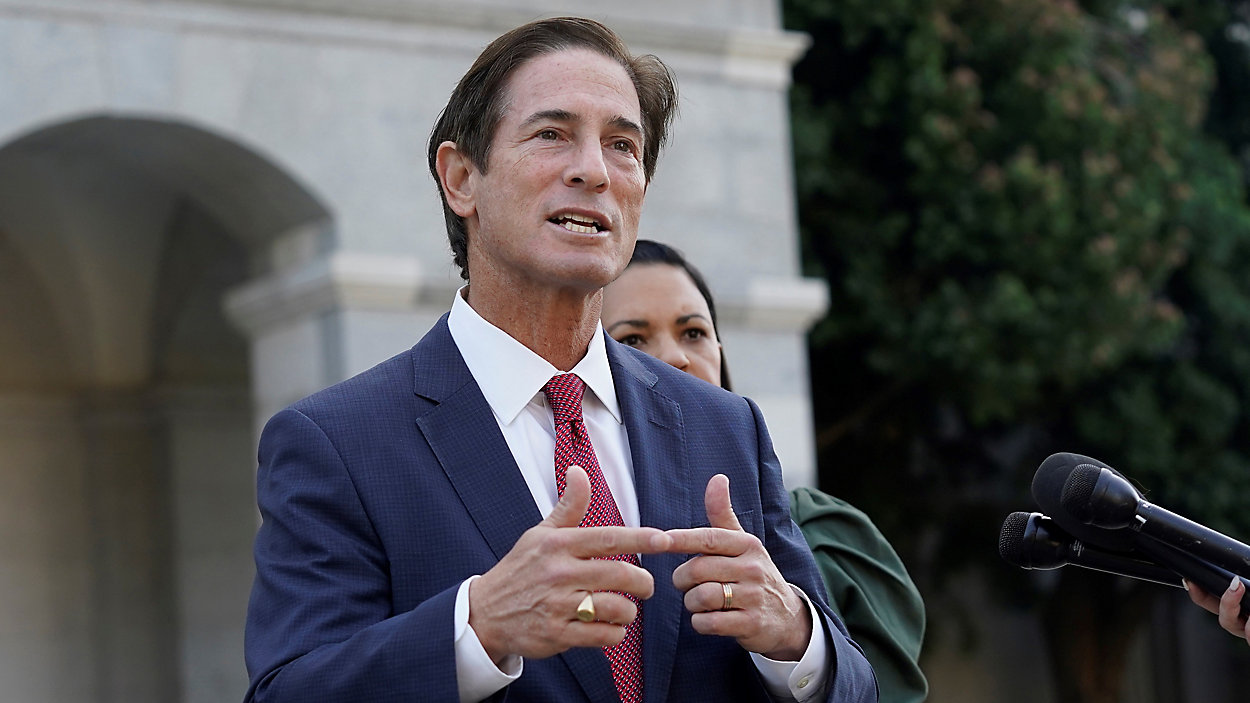On Friday night, the Court granted an emergency stay in Trump v. Orr, allowing the President’s passport policy to go into effect. To the Court’s credit, there was a mini merits analysis:
Displaying passport holders’ sex at birth no more offends equal protection principles than displaying their country of birth—in both cases, the Government is merely attesting to a historical fact without subjecting anyone to differential treatment. And on this record, respondents have failed to establish that the Government’s choice to display biological sex “lack[s] any purpose other than a bare . . . desire to harm a politically unpopular group.” Trump v. Hawaii, 585 U. S. 667, 705 (2018) (internal quotation marks omitted).
The omission of internal quotation marks here is significant. That quotation came from Justice Brennan’s opinion in Department of Agriculture v. Moreno, a decision that Justice Kennedy cited in Romer, Lawrence, and Windsor. That one passage was the fountainhead of so many flawed precedents. The full passage from Trump v. Hawaii is here:
Given the standard of review, it should come as no surprise that the Court hardly ever strikes down a policy as illegitimate under rational basis scrutiny. On the few occasions where we have done so, a common thread has been that the laws at issue lack any purpose other than a “bare . . . desire to harm a politically unpopular group.” Department of Agriculture v. Moreno, 413 U. S. 528, 534 (1973). In one case, we invalidated a local zoning ordinance that required a special permit for group homes for the intellectually disabled, but not for other facilities such as fraternity houses or hospitals. We did so on the ground that the city’s stated concerns about (among other things) “legal responsibility” and “crowded conditions” rested on “an irrational prejudice” against the intellectually dis- abled. Cleburne v. Cleburne Living Center, Inc., 473 U. S. 432, 448–450 (1985) (internal quotation marks omitted). And in another case, this Court overturned a state constitutional amendment that denied gays and lesbians access to the protection of antidiscrimination laws. The amendment, we held, was “divorced from any factual context from which we could discern a relationship to legitimate state interests,” and “its sheer breadth [was] so discontinuous with the reasons offered for it” that the initiative seemed “inexplicable by anything but animus.” Romer v. Evans, 517 U. S. 620, 632, 635 (1996).
In 2018, when Trump v. Hawaii was decided, the Court needed Justice Kennedy’s vote. That is no longer the case. I faulted Justice Barrett for citing this aspect of Trump v. Hawaii in her Skrmetti concurrence. And I will fault the per curiam Court for citing Trump v. Hawaiii in the passport case. This mode of constitutional adjudication should be jettisoned. We are no longer living in Justice Kennedy’s shadow. Political majorities can disadvantage politically unpopular groups, unless there is some a constitutional prohibition. Courts should not perform what McCreary County referred to as a “judicial psychoanalysis of a drafter’s heart of hearts.” Judges are textualists, not mentalists.
There is another facet of the passport case worth mentioning. In recent emergency docket rulings, the Court has often cited Chief Justice Roberts’s in-chambers opinion in Maryland v. King. This ruling concluded the government suffers irreparable harm whenever it is unable to enforce its laws. Justice Jackson’s Orr dissent pushes back on this premise in the context of an executive order:
While we have suggested that the government suffers “a form of irreparable injury” when it is enjoined from effectuating a duly enacted statute, see Maryland v. King, 567 U. S. 1301, 1303 (2012) (ROBERTS, C. J., in chambers), an executive order lacks the force of a statute, and an injunction barring such an order does not generate the same sovereign injury. To think it always does would be to endorse the “facially absurd” proposition that the President is irreparably harmed any time he is temporarily prevented from doing something he wants to do. D. V. D., 606 U. S., at ___–___ (SOTOMAYOR, J., dissenting from grant of stay) (slip op., at 11–12).
There is a fairly profound question here. What is law? Is law limited to a statute that was enacted pursuant to bicameralism and presentment? Or is it also law when the executive takes action pursuant to constitutional or delegated authority?
I considered this distinction in my article, Bilateral Judicial Reform. I suggested that when a district court enjoins a federal or state statute, there should be an automatic stay of the injunction. By contrast, when a district court enjoins some type of executive action, there should not be an automatic stay. I wrote:
In the federal context, laws pass through the crucible of bicameralism and presentment. Moreover, statutes were publicly debated and deliberated for ex-tensive periods, where members of the legislative and executive branch, as well as the public, had an opportunity to assess the bill. That process entitles laws to a presumption of democracy, if not a presumption of constitutionality. The same can be said of state laws that go through the legislative process. Presentment and bicameralism (unicameralism in Nebraska) are the norm for state laws. Such measures should be entitled to the same presumption of democracy, if not a presumption of constitutionality. Ditto for state constitutional amendments and referenda, which have a much stronger degree of democratic accountability than a mere statute. Statutes must be distinguished from executive actions. I would define this category broadly to include executive actions, executive memoranda, subregulatory guidance, administrative utterances, and any other diktat that can be issued without the benefit of public notice, comment, or input. They are simply announced on high from Olympus.
I thought that statutes were entitled to more deference than executive action. But Justice Jackson made a broader point. She contended that “an executive order lacks the force of a statute.” In what way? Does she think that an executive order is not part of the “supreme law of the land” under Article VI? Could a judge refuse to enforce an executive order in court? Maybe Youngstown could have simply been resolved on the grounds that an executive action lacks the force of law. The previous Justice Jackson would have had far less to write. Would an executive action not preempt state law? (The Ninth Circuit held that DACA preempts state law in Brewer v. Arizona Dream Act Coalition.) If Justices Jackson, Sotomayor, and Kagan are interested, they should pursue the many ways in which executive actions lack the “force of a statute.” Then we can talk about subregulatory guidance. I would be happy to have that conversation.



























